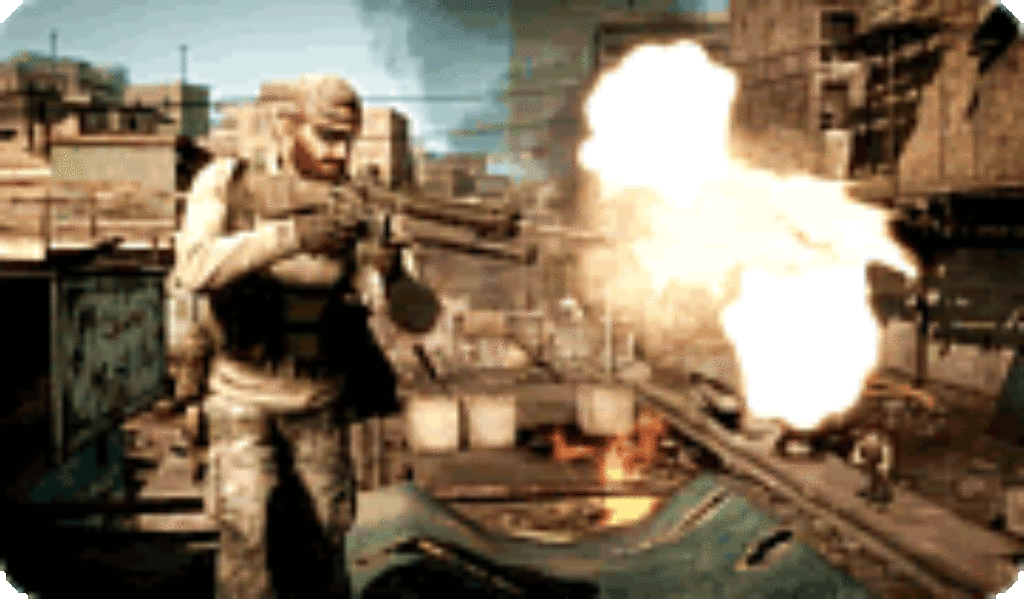
Sometimes it’s safer to tell stories about the past than to dive into the middle of a present-day skirmish. That’s a lesson Electronic Arts has learned the hard way.
Since 1999, EA’s Medal of Honor franchise has put players into the boots of soldiers slogging through World War II battlefields. With its latest iteration, simply titled Medal of Honor, however, the conflict has gotten more contemporary … and controversial.
Medal of Honor plunges participants into a brutal, covert conflict between American special forces and their post-9/11 foes in Afghanistan. Play through the game in single-player mode, and you’ll find yourself in the skin of case-hardened soldiers who go by the names Rabbit, Deuce and Adams.
They’re all Americans.
Invite a few friends over, though, or log on for multiplayer firefights online, and you can choose to don the garb of the adversary and take aim at Americans. And it’s this feature that has generated so much heat that U.S. military bases decided not to sell the game out of respect for troops who are still laying their lives on the line in Afghanistan today.
When the game first surfaced, those fighters who were targeting Americans were called Taliban. And they still are in the single-player version. But multiplayer mode finds them renamed “Opposing Force.”
That relatively small change didn’t change the military’s mind. “Merchandising a product that presents depictions of American troops engaged in an active combat zone as a game could be construed as inconsistent with the Exchange’s ongoing desire to treat its patrons and their family members with the respect their service warrants,” said Judd Anstey, a spokesman for the Army & Air Force Exchange Service.
The resulting hubbub has begged the question of whether dealing death to American forces via virtual Taliban fighters is philosophically any different than playing the role of German or Japanese soldiers in wartime conflicts set in the past. But as important as that question may be, it’s not the only one we need to be asking about Medal of Honor.
Question 1) How does Medal of Honor’s portrayal of combat in Afghanistan compare to previous franchise titles?
The easiest way to respond is with a single letter: M. Medal of Honor is the first game in the series to receive an M rating—for “blood, strong language and violence.” And it’s a well-deserved rating, too, as we get pelted with quantities of each element in this first-person shooter.
We’re no more than a couple of minutes into the first cutscene, in which two Tier 1 special-ops personnel are trying to rendezvous with a shadowy figure named Tariq, when the bullets begin to pop. As do the f-bombs. And the s-words.
Question 2) How graphic is this game?
As Rabbit and Deuce aim to put the hurt on Taliban fighters in places with such names as Shah-i-Kot Valley, players witness the death they deal … in detail. Line up sniper sights on an enemy combatant’s head, for example, and the skull-shattering results are more than visible, they’re practically engulfing. In this sense, the latest Medal of Honor entry has more in common with other M-rated war games, such as Call of Duty 4: Modern Warfare or Battlefield: Bad Company 2, than it does its own predecessors.
Question 3) How real does this game feel?
As mentioned, Medal of Honor depicts a real battle that’s happening right now. And the game’s makers have gone to some effort to remind us of that sobering fact. In a message at the game’s conclusion, we’re reminded of the heroism, sacrifice, loyalty and bravery of the troops currently stationed in Afghanistan, men and women willing to lay down everything for the sake of their country.
Writing for gamingtarget.com, reviewer Nicole Kline said, “Based on actual missions by real operatives, what happens in this game doesn’t just mimic real life—it is real life. One scene in particular was jarring to me—a scene in which my character and his cohorts are trapped in an area with barely enough cover, running quickly out of ammo as wave after wave of enemies pour out from the mountains. Hemmed in, counting bullets, getting attacked from every direction—it was overwhelming as I was suddenly faced with the horrible truth: this is happening right now, in real life, to real people.”
Question 4) Should a game feel that real?
The bravery of the men and women fighting to defend our nation’s freedom is undeniable. And the visions of violence some of them have witnessed are no doubt nightmarish. But that’s exactly why I’m left to conclude that a game depicting such scenarios can only trivialize them. Raw doses of visceral violence are shooters’ stock-in-trade, and almost without exception they are injected with the express purpose of entertaining, not educating players. Medal of Honor is no exception.

After serving as an associate editor at NavPress’ Discipleship Journal and consulting editor for Current Thoughts and Trends, Adam now oversees the editing and publishing of Plugged In’s reviews as the site’s director. He and his wife, Jennifer, have three children. In their free time, the Holzes enjoy playing games, a variety of musical instruments, swimming and … watching movies.